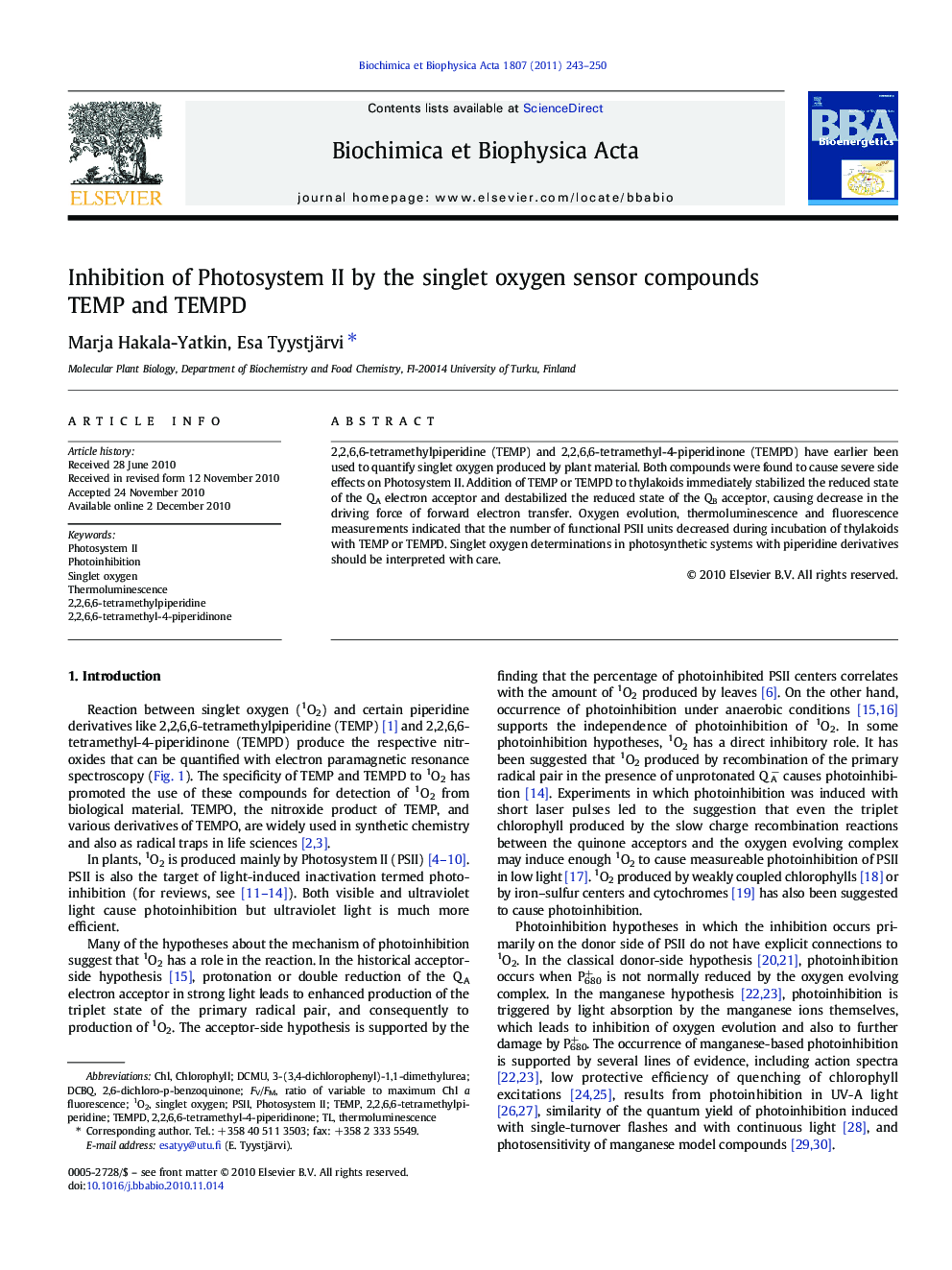| Article ID | Journal | Published Year | Pages | File Type |
|---|---|---|---|---|
| 1942790 | Biochimica et Biophysica Acta (BBA) - Bioenergetics | 2011 | 8 Pages |
2,2,6,6-tetramethylpiperidine (TEMP) and 2,2,6,6-tetramethyl-4-piperidinone (TEMPD) have earlier been used to quantify singlet oxygen produced by plant material. Both compounds were found to cause severe side effects on Photosystem II. Addition of TEMP or TEMPD to thylakoids immediately stabilized the reduced state of the QA electron acceptor and destabilized the reduced state of the QB acceptor, causing decrease in the driving force of forward electron transfer. Oxygen evolution, thermoluminescence and fluorescence measurements indicated that the number of functional PSII units decreased during incubation of thylakoids with TEMP or TEMPD. Singlet oxygen determinations in photosynthetic systems with piperidine derivatives should be interpreted with care.
Graphical AbstractFigure optionsDownload full-size imageDownload high-quality image (63 K)Download as PowerPoint slideResearch Highlights► The singlet oxygen sensor compounds TEMP and TEMPD inhibit oxygen evolution by Photosystem II. ► TEMP and TEMPD decrease the driving force of electron transfer from primary to secondary quinone of Photosystem II. ► It is questionable whether these compounds can be used for singlet oxygen measurement in plant material.
